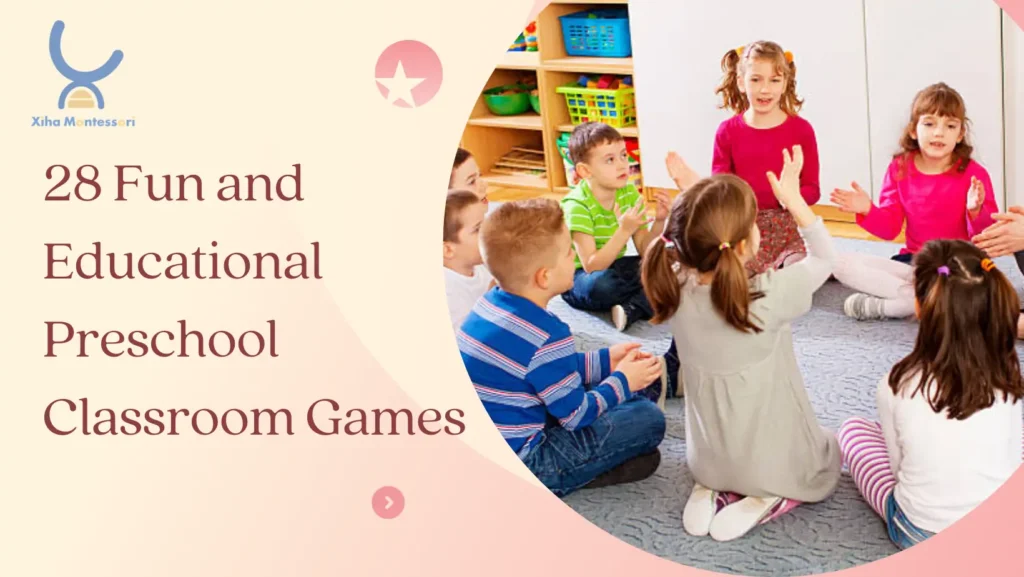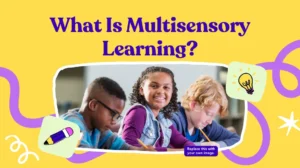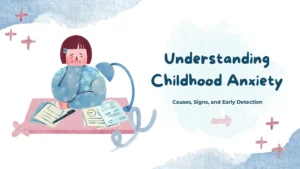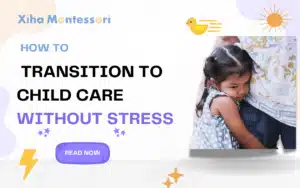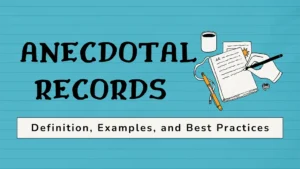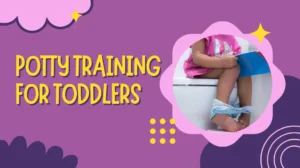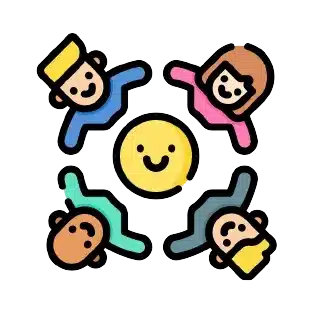Are you looking for fun and educational preschool classroom games, then you’ve come to the right place? In this post, we’ve curated a list of 28 exciting games that will keep your preschoolers entertained while they learn. From interactive group activities to individual challenges, stimulate your preschooler’s cognitive, social, and physical skills.
Preschool classroom games combine education with entertainment. The integration of these preschool classroom games into everyday learning can significantly improve cognitive, social, and physical skills. Children learn best when engaged and entertained, making these games the cornerstone of effective preschool education.
Whether you’re a teacher or a parent, you’ll find a variety of games for different learning goals and age levels. Preschool classroom games are not only entertaining, but also encourage teamwork, problem solving and creativity.
Our brand understands the importance of early childhood play and educational environments. That’s why we’ve curated this list of preschool classroom games that are both fun and informative. Turn your preschool classroom into a vibrant and exciting space where learning is accompanied by a touch of laughter.
The importance of preschool classroom games
Preschool classroom games are of unrivaled importance in the education of young children. Through play, preschoolers are introduced to basic concepts in math, language, science, and social studies in a way that is both engaging and easy to understand.
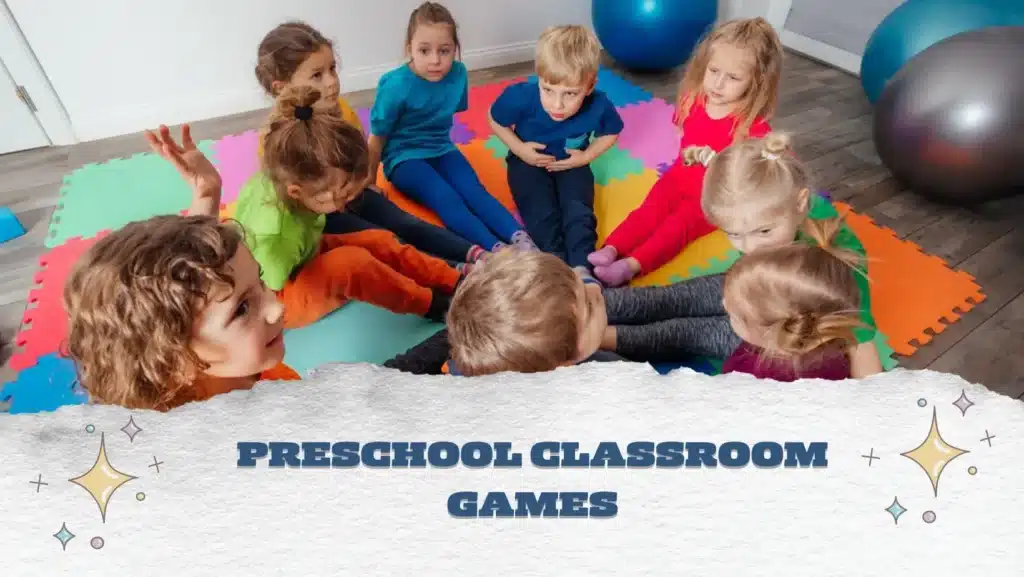
Play in preschool settings fosters a love of learning by making educational content enjoyable. This positive connection to learning from an early age is critical to long-term educational success. In addition, preschool classroom games provides a dynamic platform for children to explore their abilities, face challenges and learn to overcome obstacles, laying the foundation for critical thinking and problem-solving skills.
When children play together, they learn valuable lessons in communication, cooperation and empathy. They begin to understand the importance of taking turns, sharing and working as part of a team. These early lessons in socialization are essential to building healthy relationships and thriving in a group setting.
Physical development is another key area of preschool classroom games enhancement. Activities that require movement, coordination and balance help children develop both gross and fine motor skills. Whether it’s navigating an obstacle course or putting together a large floor puzzle, play provides a fun way to improve physical abilities.
Benefits of preschool classroom games
The benefits of incorporating games into the preschool curriculum are extensive and impact various aspects of a child’s development.
- Cognitive Development: preschool classroom games challenge the mind and stimulate intellectual growth. Puzzles, memory preschool classroom games, and problem-solving activities enhance cognitive abilities such as memory, concentration, and reasoning.
- Language Skills: Language-rich games, including storytelling and role-playing, encourage language development and vocabulary expansion
- Emotional and Social Development: Through preschool classroom games, children learn to express themselves, recognize and manage their emotions, and navigate social interactions. They develop empathy and understanding.
- Physical Development: Active preschool classroom games promote physical health and development. They encourage movement, coordination, and the development of motor skills, contributing to a child’s overall well-being.
- Creativity and Imagination: Games that involve role-playing, drawing, and crafting foster creativity and imagination. Children learn to think outside the box and express themselves through various mediums.
Suitable Games for Preschool Children
Selecting appropriate games for preschoolers requires careful consideration of their developmental stage, interests, and abilities. The best preschool classroom games are those that balance educational content with fun, engaging elements that capture children’s attention and imagination.
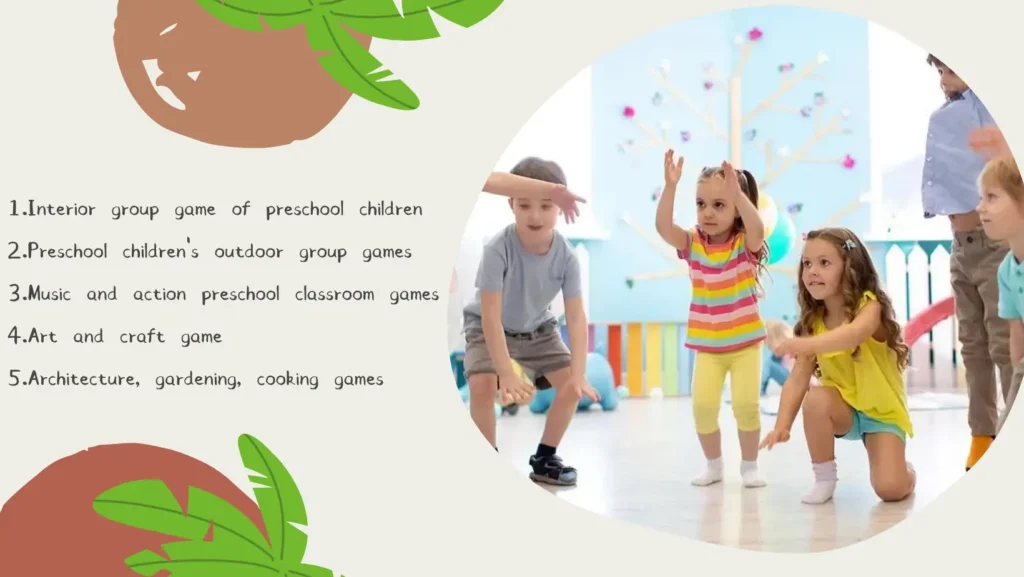
1.Interior group game of preschool children
Active play is great for building gross motor skills, and quiet play has many benefits-improving concentration, listening skills, problem solving, and more.
Simon Says
“Simon Says” is more than just a game of following instructions; it’s a fun way to develop listening skills, body awareness, and the ability to differentiate between when to take action and when to pause. In this preschool classroom game, the leader, “Simon,” gives commands to the children, such as “Simon says touch your toes.” The trick is that the children should only follow the command if it starts with “Simon says.” If a command is given without this prefix, those who follow it are out. This game not only entertains but also sharpens attention to detail and fosters quick thinking.
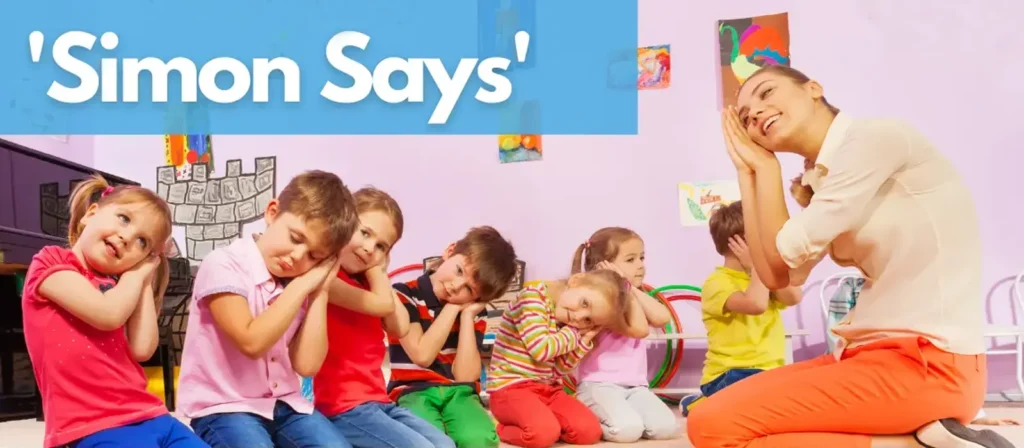
The educational benefits of “Simon Says” extend to following directions, enhancing memory recall, and improving physical coordination. By incorporating variations, such as using complex instructions or integrating academic content (e.g., “Simon says show me two fingers”), educators can adapt the game to different learning objectives, making it a versatile tool in the preschool classroom.
Broken Telephone
The “Broken Telephone” preschool classroom games are a classic example of how simple activities can be turned into powerful learning tools. In this game, children sit in a circle, and a message is whispered from one child to the next until it reaches the last participant, who says it out loud. The fun lies in seeing how much the message changes as it passes through each whisperer.
This preschool classroom games is particularly effective for enhancing listening skills, verbal communication, and memory. It also helps your child interact with peers and gain social skills.It also introduces children to the concept of how easily information can be misinterpreted or changed, emphasizing the importance of clear communication. To add an educational twist, use phrases related to classroom topics or include vocabulary words to reinforce language learning.
Story Time Clap
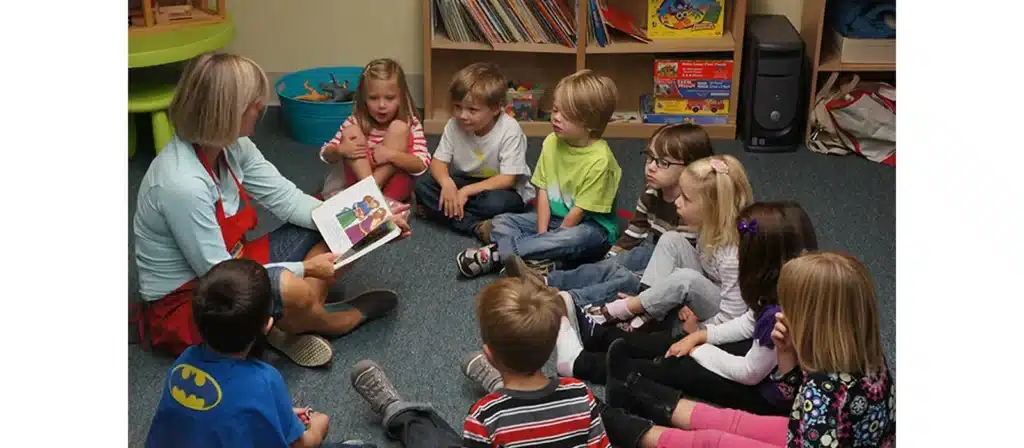
“Story Time Clap” is an innovative game that combines storytelling with active participation. In this activity, a story is read aloud, and children are instructed to clap whenever they hear a predetermined word or phrase. This preschool classroom games can be tailored to any educational theme, such as clapping at the mention of a specific character, action, or emotion.
Besides being a fun way to engage with stories, “Story Time Clap” enhances auditory processing skills, attention span, and comprehension. It encourages children to listen closely and react, fostering a deeper connection with the narrative and its elements. Educators can further extend the learning by discussing the story’s themes, characters, and morals afterward.
Explore the Letters Sensory Box
“Explore the Letters Sensory Box” is an interactive game that merges tactile exploration with alphabet learning. A sensory box is filled with various objects or materials, such as sand, rice, or beans, and letter shapes are hidden within. Children dig through the box to find the letters, which can then be used to form words or match with pictures.
This game targets multiple developmental areas, including fine motor skills, letter recognition, and vocabulary development. The sensory aspect of the game also provides a calming effect, making it an excellent activity for children who benefit from sensory play. By customizing the contents of the box, educators can create themed sensory experiences that align with current classroom topics.
I Spy
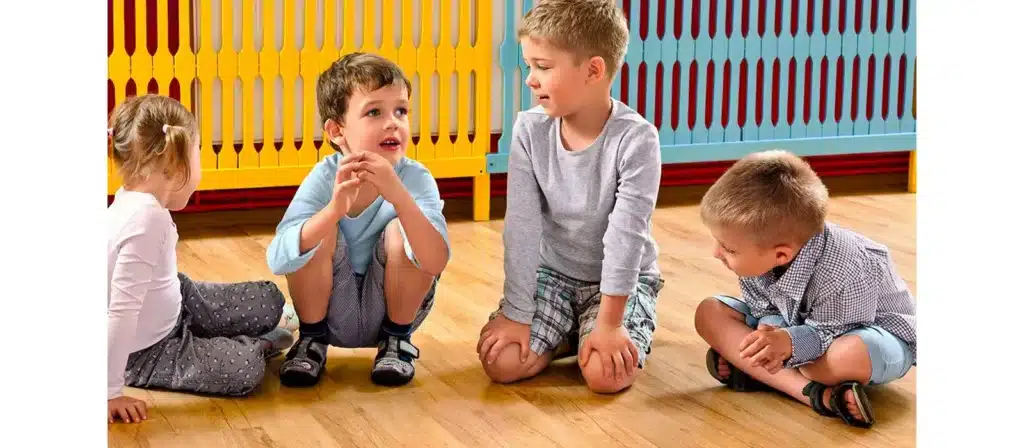
“I Spy” is a classic preschool classroom games that can be easily adapted for educational purposes. In its simplest form, one person selects an object within sight and gives a clue, starting with “I spy with my little eye, something that…” followed by a description of the object. This game can be played anywhere, making it a versatile option for learning moments outside of the traditional classroom setting.
Red Light, Green Light
“Red Light, Green Light” is a classic outdoor game that promotes physical activity while teaching self-control and listening skills. One child plays the “traffic light” at one end of the play area, with the rest of the children at the other end. When the “traffic light” says “green light,” children move towards them, and when they say “red light,” children must freeze. The goal is to be the first to reach the “traffic light.”
This game is beneficial for developing attention, listening skills, and understanding of basic commands. It also provides a fun way to practice quick reactions and self-regulation. Teachers can incorporate variations, such as using different languages for commands or integrating math by having the “traffic light” hold up a number of fingers that the children must then shout out before moving.
Heads Up, Seven Up
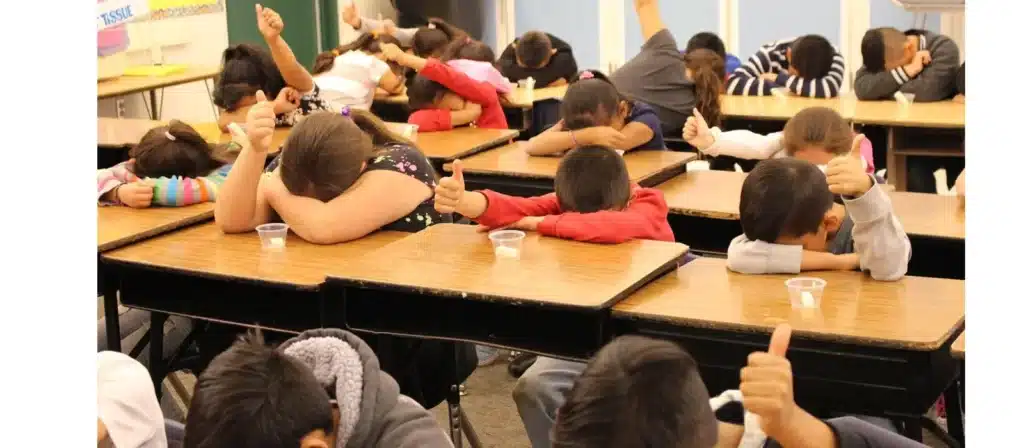
“Heads Up, Seven Up” is a popular preschool classroom games that helps build observation and deduction skills. Seven children are chosen to stand at the front of the class, while the rest put their heads down on their desks with their thumbs up. The seven then quietly walk around and each press down one child’s thumb. Those whose thumbs were pressed have to guess which of the seven chose them.
Kick Cup
“Kick Cup” combines physical activity with elements of strategy and team play. In this game, plastic cups are placed on the ground in a line or circle. Children are divided into teams, and the objective is to knock down as many cups as possible by kicking a ball at them. After all the cups are knocked down, the team with the most cups wins.
This game is great for developing motor skills, team cooperation, and understanding of winning and losing in a group setting. It can be modified to be more educational by writing numbers, letters, or words on the cups and asking children to target specific ones, integrating learning objectives into the physical activity.
Throw a Knowledge Ball
“Throw a Knowledge Ball” is an interactive game that combines physical activity with cognitive challenges. A soft ball is tossed among children, and whoever catches it must answer a question before tossing it to someone else. Questions can be tailored to the current curriculum, such as simple math problems, naming colors, or identifying shapes.
Playing Indoor Tennis
“Playing Indoor Tennis” with balloons or lightweight balls is a fantastic way to develop hand-eye coordination and teach basic principles of physics and movement. Using makeshift rackets or their hands, children try to keep the balloon or ball in the air, hitting it back and forth to each other.
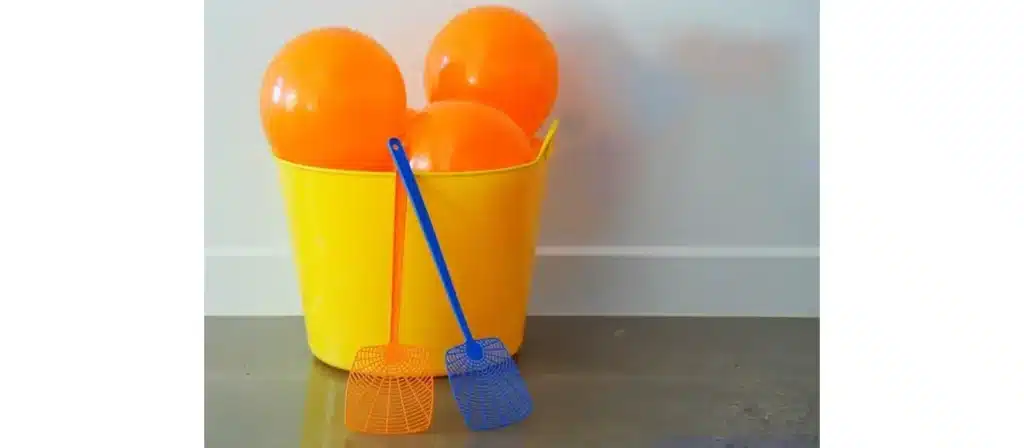
This preschool classroom games is not only fun but also educational, as children learn about force, trajectory, and the effects of different strengths and angles of hitting the balloon or ball. It can be played in pairs or small groups, promoting teamwork and cooperation.
2.Preschool children’s outdoor group games
Some great outdoor preschool classroom play activities for preschoolers to play and interact with.
Play with Parachutes
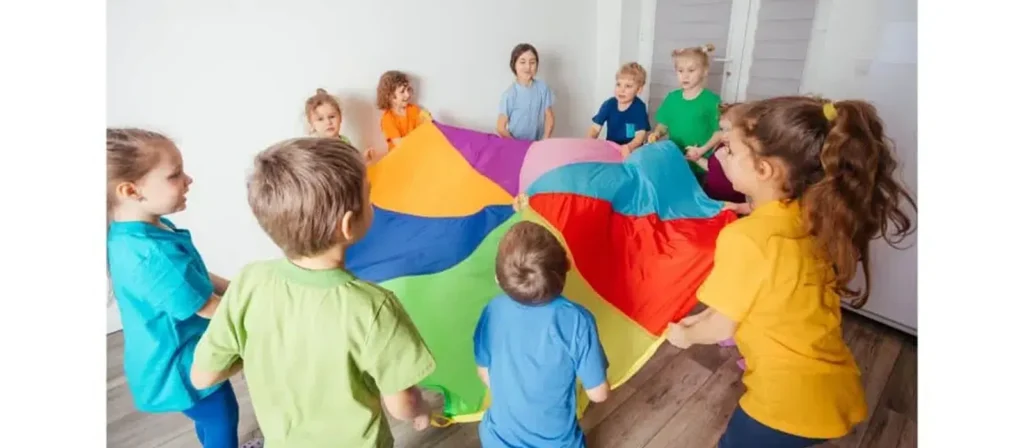
Playing with parachutes offers a fantastic way to teach teamwork, follow instructions, and develop gross motor skills. This activity involves children holding onto the edges of a large parachute and moving it up and down to create waves, or lifting it high to run underneath before it falls. It’s a visually stimulating game that encourages cooperation and coordination.
Parachute play can also be educational. For instance, you can incorporate colors, numbers, and shapes into the games. Calling out a color or number as a cue for children to run under the parachute helps with recognition and listening skills. The physical activity involved is excellent for developing motor skills and promoting physical fitness.
Cross the River
“Cross the River” challenges children’s problem-solving skills and promotes physical coordination. In this game, children must figure out how to “cross” a designated area (the river) using only certain materials (stones, mats, or paper) without touching the floor. It encourages strategic thinking, balance, and teamwork.
Ask the children to play “ants” and step on the “marshmallows” to cross the “river of hot chocolate”. Have them join hands in a line and work together to cross.
Make a Water Wall
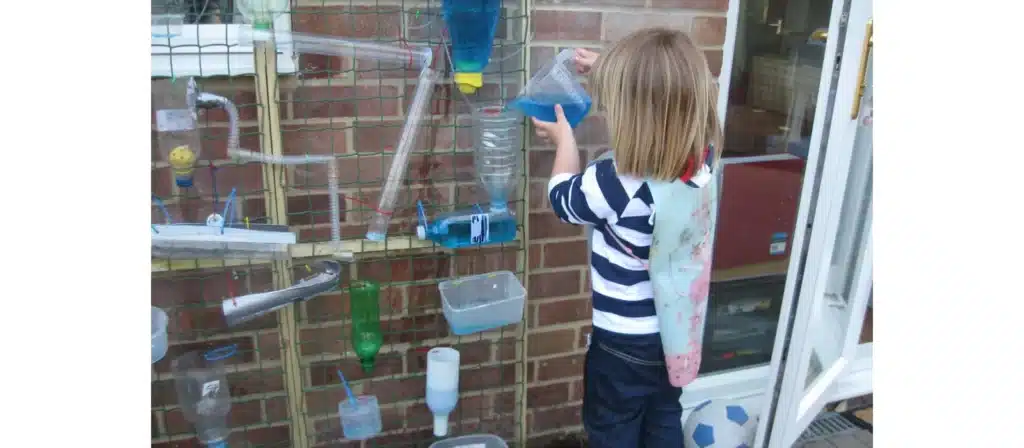
Creating a water wall is a fantastic outdoor activity that combines science learning with play. Children can pour water at the top and watch as it cascades down through various funnels, tubes, and containers. It’s a hands-on way to explore concepts of gravity, flow, and basic physics.
Building the water wall itself can be a collaborative project, encouraging problem-solving and creativity. Children can help design the layout and decide where to place each element, learning about cause and effect as they see how the water’s path changes based on their design choices.
Treasure Hunting Game
A treasure hunting game is an exciting way to encourage exploration and critical thinking. Hiding objects or “treasures” around the classroom or playground and giving children clues or maps to find them not only makes for an exciting adventure but also sharpens their problem-solving and interpretation skills.
Preschool classroom games can be tailored to educational themes, such as historical explorers, animals, or the solar system, with each treasure representing a fact or item related to the theme. It’s an effective way to integrate learning into a physically active and engaging game.
Hopscotch
Hopscotch is a timeless game that combines physical activity with learning. Drawing a hopscotch grid with chalk and having children hop through the numbers promotes number recognition, balance, and coordination. It’s a simple yet effective game for teaching number sequences and encouraging physical exercise.
3.Music and action preschool classroom games
Homemade Band
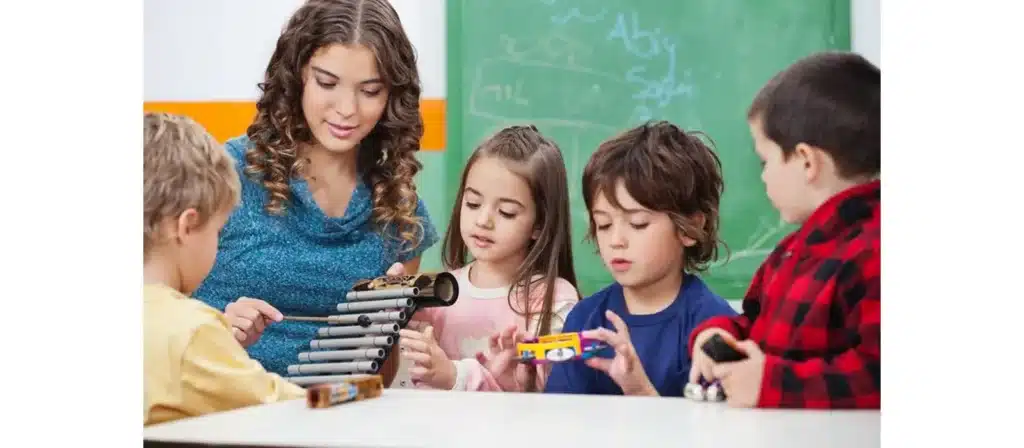
Creating a homemade band is a fantastic way to introduce children to the joys of music and rhythm. Using simple, everyday items, children can craft their own musical instruments—drums from oatmeal boxes, shakers from filled bottles, and guitars from shoeboxes with rubber bands. This activity encourages creativity, fine motor skill development, and an understanding of cause and effect as children see how different actions produce various sounds.
Music Chair
Music chair, a variation of the classic game musical chairs, combines the excitement of music with the thrill of competition. As music plays, children walk around a circle of chairs, and when the music stops, everyone must find a chair to sit in, with one less chair than there are children. The game helps develop listening skills, quick reactions, and agility.
Freeze Dance
Freeze dance is an energetic and inclusive game that encourages children to express themselves through movement. As music plays, everyone dances freely until the music stops, at which point they must freeze in place. This game is excellent for promoting physical fitness, coordination, and balance.
Yoga for Kids
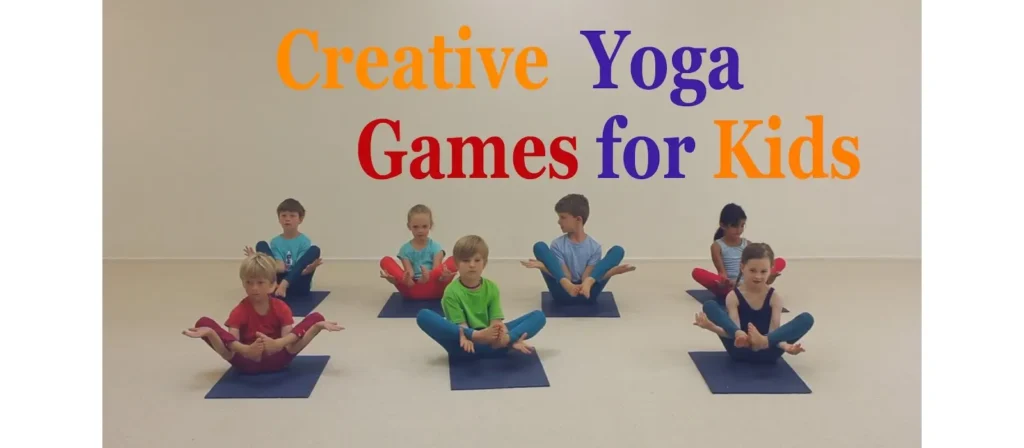
Yoga for kids introduces young learners to the benefits of mindfulness, flexibility, and physical strength. Through simple poses and guided breathing exercises, children learn to focus, calm their minds, and manage stress. Yoga sessions can be themed around nature, animals, or storytelling, making the practice engaging and educational.
Copy Dancing
Copy dancing is a dynamic game that fosters imitation and memory skills. One child or the teacher performs a dance move, and the others must mimic it. This can be turned into a fun sequence game where each child adds a new move to the sequence, and everyone tries to remember the entire routine.
4.Art and craft game
Make Bubbles
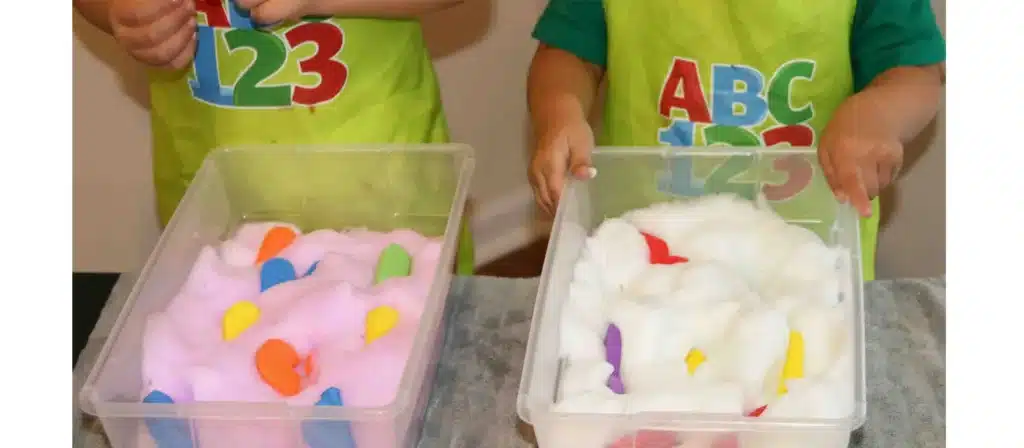
Creating bubbles is a simple yet fascinating activity that can teach preschoolers about science while they play. By mixing water, dish soap, and a little glycerin, children can create their own bubble solution. This hands-on experiment encourages curiosity about the natural world, as children question why bubbles form, why they float, and why they pop.
Color Flowers
Coloring flowers involves a simple yet magical process where children can change the color of white flowers using food coloring. By placing the stems of white carnations or daisies into water mixed with food coloring, children can watch as the flowers gradually change color over several days. This activity introduces basic principles of plant science, such as how plants absorb water through their stems.
This visual transformation not only teaches scientific concepts but also promotes patience and observation skills. It provides an excellent opportunity for discussions about nature, the function of plant parts, and the concept of time. Additionally, this activity allows children to experiment with color mixing, enhancing their understanding of colors and creativity.
Make a Mask
Crafting masks is a creative activity that allows children to explore identity and culture through art. Using simple materials like paper plates, construction paper, feathers, and markers, children can design masks that reflect their personalities, favorite animals, or characters from stories they love. This project encourages imagination and self-expression, as children decide how they want to represent themselves or their chosen subject.
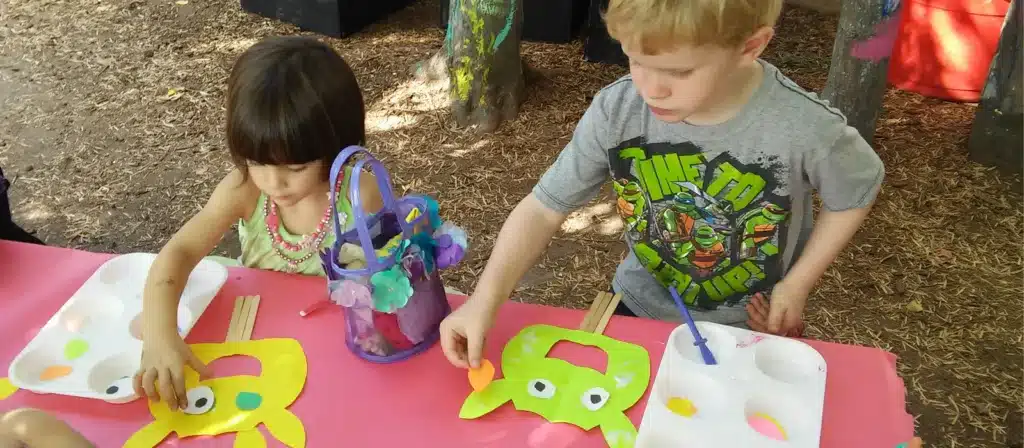
Making masks also introduces preschoolers to the concept of symbols and how they can be used to convey different meanings or emotions. It can be a collaborative activity, promoting social skills as children share ideas and materials.
Self-portraits
Drawing self-portraits is an introspective activity that helps children explore their sense of self and how they see the world around them. Using mirrors, paper and drawing materials, children draw themselves.
5.Architecture, gardening, cooking games
Build a Fort
Build forts out of blankets, pillows, boxes, or lightweight furniture. Building forts can be an open-ended activity where children are free to design and modify their creations, an activity that encourages teamwork, problem solving, and spatial awareness as they figure out how to create stable structures.
Drama
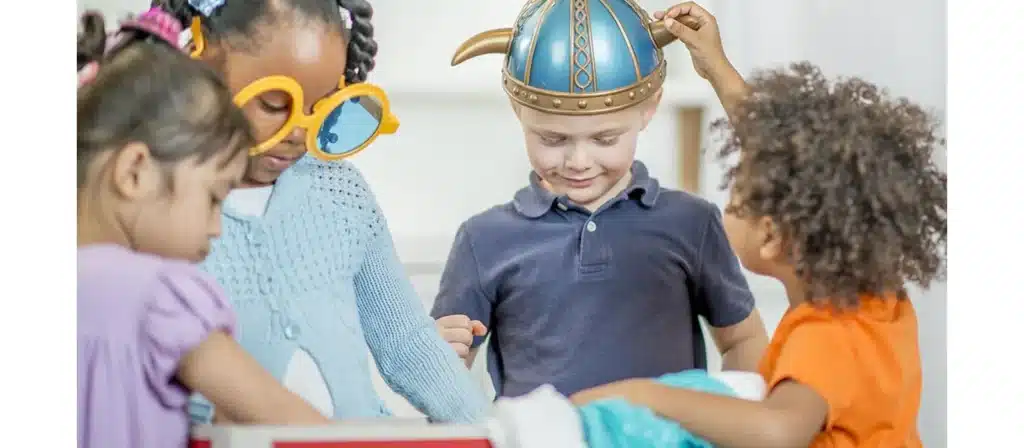
Participating in drama activities, such as role-playing, improvisation, and performance, supports emotional expression, empathy, and understanding of narrative structure. Children learn to communicate their ideas and feelings through characters and stories, which enhances their language and literacy skills. Drama games can introduce preschoolers to new vocabulary, social situations, and cultural contexts, broadening their understanding of the world.
Cooking
Cooking projects introduce preschoolers to basic math concepts, science, and nutrition in a hands-on and engaging way. Measuring ingredients, following recipes, and observing changes in food as it cooks provide practical applications of counting, sequencing, and understanding transformations. Cooking together also emphasizes the importance of following instructions and working cooperatively.
Water Play
Children can use it for sensory exploration. You can make your own using any size plastic bucket. Water play also improves children’s fine motor skills and hand-eye coordination when scooping, pouring and splashing. Adding items such as colored ice cubes, water droplets or sponges introduces variety and additional sensory experiences.
Preschool classroom games are an essential part of early childhood education, combining fun with learning. By carefully selecting these games and incorporating them into the curriculum, educators can foster a love of learning that can last a lifetime.

